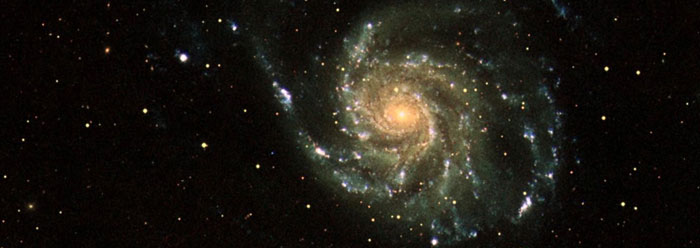This year science has challenged the popular idea that the universe developed all by itself over billions of years. Astronomical discoveries from 2013 confirm creation—starting with the moon and reaching to the farthest galaxies.
If the moon was formed over four billion years ago by some colossal impact as secularists assert, then it should be dry as a bone. The violent impact would have melted all the minerals and thus would have ejected any water from its magma. But this year researchers reported discovering water within the minerals of some moon rocks. Not only does this refute the molten moon narrative, but it supports Scripture’s recent and watery lunar origins.1
The moon’s magnetic features also support a recent origin by design. First, the moon still has a weak magnetic field today, even though a theoretical field that fits the moon’s size can only last about 10,000 years. Also, moon rocks show that the moon had an even stronger magnetic field back when they formed. These features support the idea that God made the moon recently and that its magnetic field has been steadily decaying since creation.2
Ison was called the comet of the century, and many hoped it would put on a spectacular show with a December 2013 flyby. However, “most agree that ISON was destroyed” when it got too close to the sun’s heat, according to December NASA news.3 Professional and lay astronomers alike searched for fragments the dead comet may have left behind. Comet Ison’s short life should remind its many fans that it should never have existed if it formed billions of years ago, as an ICR article from earlier this year explained.4
A 2013 article in the journal Nature described some of Saturn’s mysteries, and ICR’s Jake Hebert explained how biblical creation solves each of them.5 For example, perhaps the planet’s rings look shiny and new because they are new. If Saturn’s moon Enceladus were older than a mere several thousand years, it could not possess the material and energy to produce its still-active geyser. And sunlight destroys methane at a steady rate on Saturn’s moon Titan, which still has plenty of the gas swirling in its atmosphere. This makes sense if it is just thousands of years young.
Peering into deep space, in 2013 astronomers found a connection between galaxies that are spread farther apart than a key assumption underpinning Big Bang cosmologies allows.6 The immensity of this structure should remind observers that “as the heavens are higher than the earth, so are My ways higher than your ways, and My thoughts than your thoughts.”7 After all, God created extremely distant galaxies that look fully “mature,” complete with clumps of fully-formed stars and proportions of elements that should not exist that far away if nature-only origins were real.8
Conventional wisdom insists that natural laws somehow built planets, stars, and galaxies over billions of years, but biblical creation and these 2013 astronomy discoveries attest to their miraculous formation only thousands of years ago.
References
- Thomas, B. Water in Rocks May Support Moon's Bible Origins. Creation Science Update. Posted on icr.org September 25, 2013, accessed December 9, 2013.
- Thomas, B. The Moon's Latest Magnetic Mysteries. Creation Science Update. Posted on icr.org June 7, 2013, accessed December 9, 2013.
- NASA Begins Search For What Is Left Of Comet ISON. NASA News. Posted on nasa.gov December 4, 2013, accessed December 9, 2013.
- Thomas, B. Ison—The Comet of the Century. Creation Science Update. Posted on icr.org June 28, 2013, accessed December 9, 2013.
- Hebert, J. Youthful Solar System Bodies Puzzle Evolutionary Scientists. Creation Science Update. Posted on icr.org February 13, 2013, accessed December 9, 2013.
- Thomas, B. Massive Quasar Cluster Refutes Core Cosmology Principle. Creation Science Update. Posted on icr.org January 18, 2013, accessed December 9, 2013.
- Isaiah 55:9.
- Thomas, B. Secrets from the Most Distant Galaxy. Creation Science Update. Posted on icr.org November 18, 2013, accessed December 9, 2013.
Image credit: NASA/JPL/Caltech
* Mr. Thomas is Science Writer at the Institute for Creation Research.
Article posted on December 18, 2013.






















